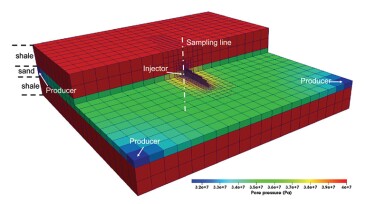Enhanced recovery
This study combines preshear degradation, permeability, and oil presence effects to evaluate and improve polymer injectivity using acrylamido tertiary butyl sulfonate (ATBS) polymer in carbonate rock.
The authors of this paper describe reservoir-fluid-geodynamics processes that explain the reasons behind varying oil compositions and properties within and across different reservoir compartments.
This work investigates the root cause of strong oil/water emulsion and if sludge formation is occurring within the reservoir using a robust integrated approach.
-
In this study, the application of electrical resistance heating on multilateral wells is studied to illustrate the enhanced physical and economic benefits of the method.
-
This paper introduces methods to fully couple reservoir simulation with wellbore flow models in fractured injection wells.
-
The paper presents a model for shale gas production in which CO2 is injected by huff ’n’ puff into a hydraulic fracture surrounded by a shale matrix.
-
Statistics are important in knowing where the sharp minds of SPE members are investing their energies. Typically, this is also in proportion to what those members need. Hence, it is noteworthy that more than a fifth of the papers were about CO2-based EOR, indicating not only renewed interest but also the motivation for carbon capture, use, and storage.
-
This study explores pitfalls experienced when using capacitance/resistance modeling as a plug-and-play technique for waterflood optimization and discusses workarounds and mitigations to improve its reliability.
-
As the discovery rate of new hydrocarbon resources decreases, the need for more-efficient enhanced-oil-recovery processes increases. Unlike in the past, however, when the efficiency was defined in terms of maximizing the recovery factor (RF), the new interpretation of efficiency is based on optimizing the balance between RF and the reduction of carbon footprint.
-
This paper reveals the potential of an in-situ generated gel system designed with a bionanoparticle that has tunable strength and gelation reversibility in porous media for underground applications.
-
In this study, the authors show that high-temperature, high-salinity polymers can exhibit low adsorption and retention in carbonate reservoir rock at ultrahigh salinity conditions.
-
In this paper, a complete safety-management approach and a contingency plan are developed for carbon dioxide waterless fracturing operations.
-
This paper discusses the field implementation of a downhole chemical methodology that has positively affected overall productivity for a mature Kuwait field.













